Grebes, a distinctive family of waterfowl within the avian realm, captivate observers with their unique characteristics and intriguing behaviors.
Members of the family Podicipedidae, grebes are renowned for their exceptional diving abilities, navigating aquatic habitats with grace and precision.
With a global distribution spanning diverse freshwater ecosystems, from serene lakes to marshes, these birds have adapted to a semi-aquatic lifestyle. Their streamlined bodies, lobed toes, and intricate courtship displays highlight their evolutionary prowess.
From the cryptic plumage of non-breeding seasons to the striking ornamental features during courtship, grebes offer a visual feast for bird enthusiasts.
With shared parental responsibilities and floating nests anchored to emergent vegetation, their life strategies showcase adaptability and cooperative parenting.
This introduction sets the stage to delve into the multifaceted world of grebes, where each species unfolds its own story of survival and adaptation in aquatic environments.
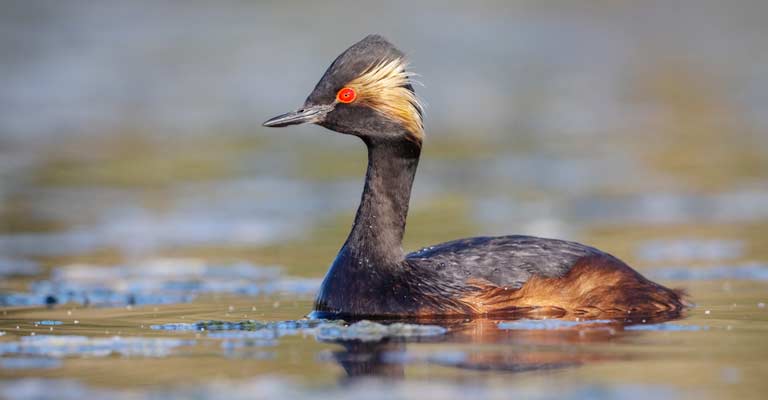
Physical Characteristics of Grebes
Grebes are fascinating water birds known for their unique physical characteristics that set them apart from other avian species. Identifying these birds requires a keen eye and an understanding of their distinctive features.
Here are eight key points to help you identify grebes:
Size and Shape
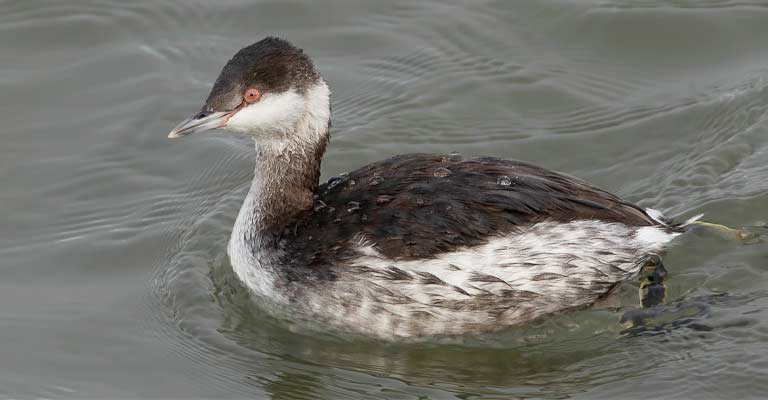
Grebes are medium to large-sized birds with a streamlined and elongated body. They typically range from 10 to 29 inches in length, depending on the species.
Their bodies are built for life on the water, featuring a long neck, slender bill, and a relatively short tail.
Plumage Coloration
Grebes exhibit a variety of plumage colors, ranging from shades of brown and gray to black and white.
Many species display striking patterns, with contrasting colors on their face, neck, and body. Breeding plumage can be more vibrant, while non-breeding plumage may be more subdued.
Facial Features
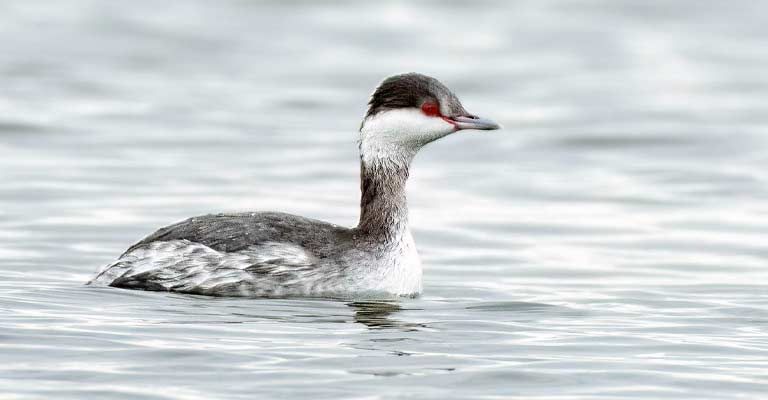
The facial features of grebes are often distinctive. Look for their red or orange eyes and a unique facial pattern, which may include stripes, spots, or distinctive markings.
Some species have colorful facial patches during the breeding season, serving as important identification markers.
Bill Characteristics
Grebes have pointed and dagger-like bills, adapted for catching their aquatic prey. The shape of the bill can vary among species, ranging from straight to slightly upturned.
The bill coloration may also change during the breeding season, becoming brighter and more noticeable.
Leg Placement
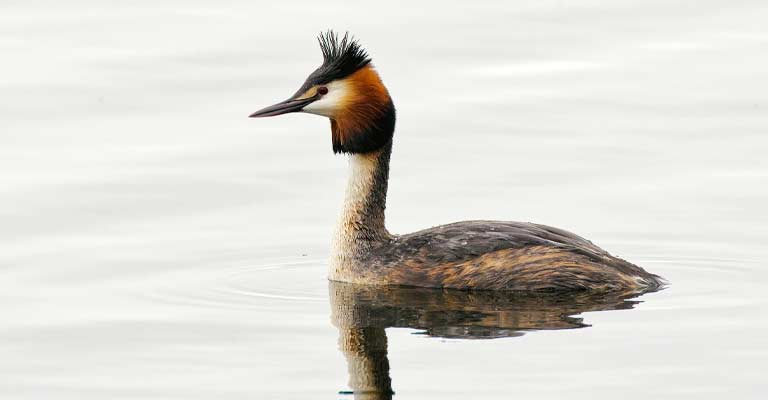
One of the most remarkable features of grebes is the placement of their legs. Positioned far back on their bodies, near the tail, their legs are adapted for efficient swimming but make walking on land a challenge.
This distinctive leg placement is a key characteristic that helps identify them.
Feet and Toes
Grebes have lobed toes, a unique adaptation that aids in swimming. The lobes provide additional surface area, enhancing their ability to propel through the water with agility.
This feature is particularly helpful when differentiating grebes from other waterfowl.
Courtship Displays
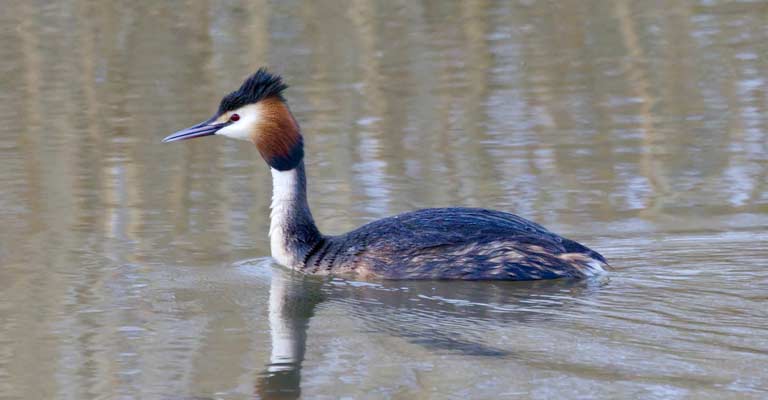
During the breeding season, grebes engage in elaborate courtship displays that can aid in identification.
These displays may involve synchronized swimming, head bobbing, and other intricate movements. Observing these behaviors can offer valuable clues about the species.
Habitat and Behavior
Understanding the typical habitat and behavior of grebes can also contribute to identification. Grebes are commonly found in freshwater habitats such as lakes, ponds, and marshes.
Their diving behavior, with the ability to stay submerged for extended periods, is another distinctive characteristic.
Identifying grebes involves a combination of observing their size, plumage, facial features, bill characteristics, leg placement, feet and toes, courtship displays, and understanding their habitat and behavior.
With these key points in mind, birdwatchers and nature enthusiasts can appreciate the unique and captivating qualities of these water-dwelling birds.
Taxonomy of Grebes
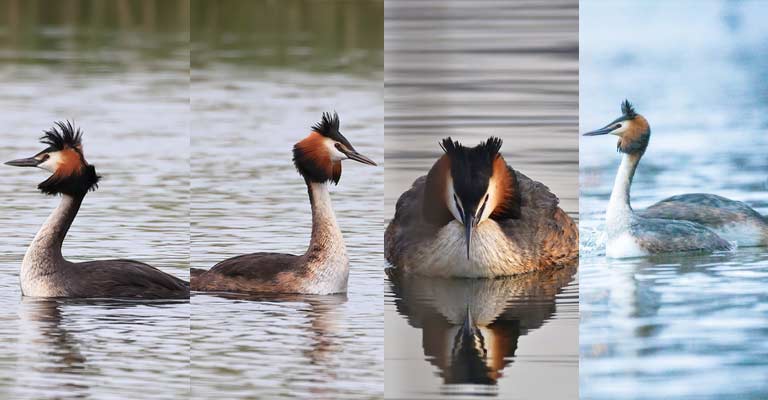
Here is a table outlining the taxonomy details of grebes based on the provided information:
| Taxonomic Level | Classification |
| Domain | Eukaryota |
| Kingdom | Animalia |
| Phylum | Chordata |
| Class | Aves |
| Clade | Neoaves |
| Clade | Mirandornithes |
| Order | Podicipediformes Fürbringer, 1888 |
| Family | Podicipedidae Bonaparte |
Grebes, belonging to the class Aves within the animal kingdom, are a distinctive group of waterfowl characterized by their unique adaptations.
Classified under the order Podicipediformes within the Neoaves clade, they further fall into the Mirandornithes clade. The family Podicipedidae, as recognized by Bonaparte, encompasses these birds.
With their streamlined bodies, lobed toes, and specialized bills, grebes thrive in aquatic habitats. This taxonomy places them in the broader context of avian diversity, highlighting their evolutionary adaptations for life in freshwater environments.
Subspecies of Grebes
The group of birds encompassing various species related to grebes presents a fascinating array of waterfowl, each with its unique characteristics.
Here’s a brief overview of the mentioned species:
Clark’s Grebe
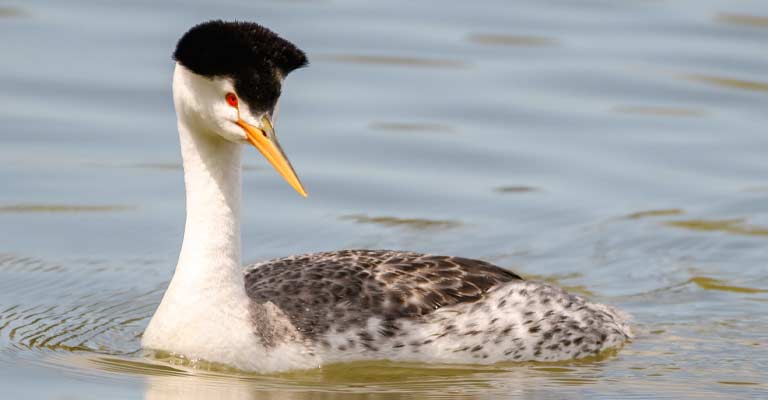
Similar to the Western Grebe, Clark’s Grebe is recognized by its striking black cap and white face. These birds are skilled divers and swimmers, often seen in freshwater habitats.
Western Grebe
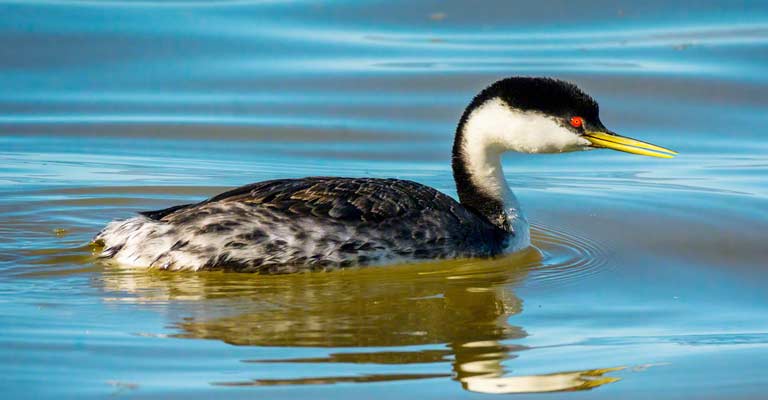
Known for its elegant appearance, the Western Grebe boasts a long neck and distinctive black-and-white plumage. During courtship displays, they engage in synchronized swimming, creating a captivating spectacle.
Black-necked Grebe
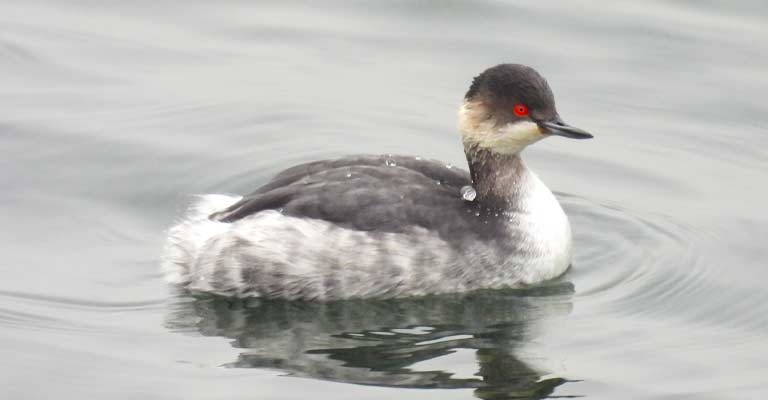
Characterized by its black neck and striking red eyes, the Black-necked Grebe is a small, diving bird commonly found in European and Asian wetlands.
Red-necked Grebe
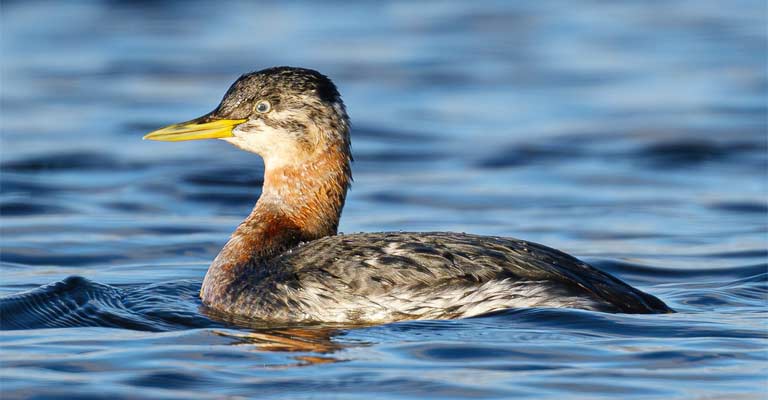
Featuring a vibrant redneck during the breeding season, the Red-necked Grebe inhabits northern lakes and ponds. Its intricate courtship displays involve elaborate movements on the water.
Horned Grebe
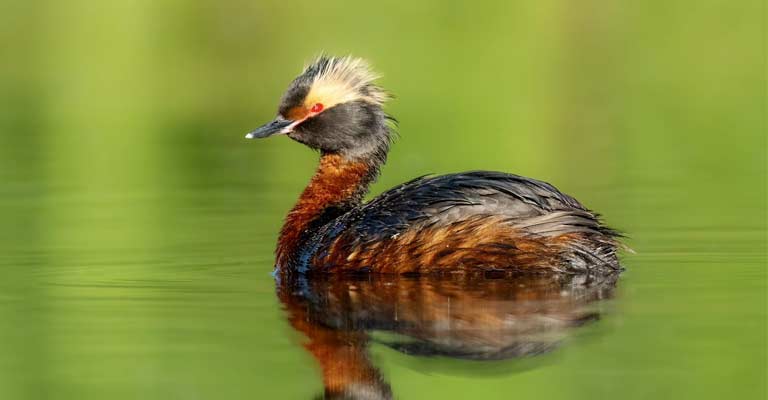
Named for its distinctive “horns” or tufts of golden feathers during the breeding season, the Horned Grebe is a captivating bird found in North America and Eurasia.
Pied-billed Grebe
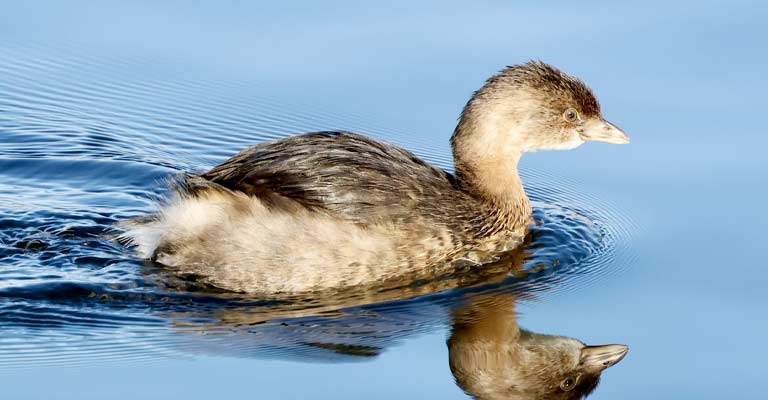
Identified by its stubby bill with a distinctive black stripe, the Pied-billed Grebe is a compact bird that frequents freshwater habitats in the Americas. They are proficient divers and swimmers.
Little Grebe
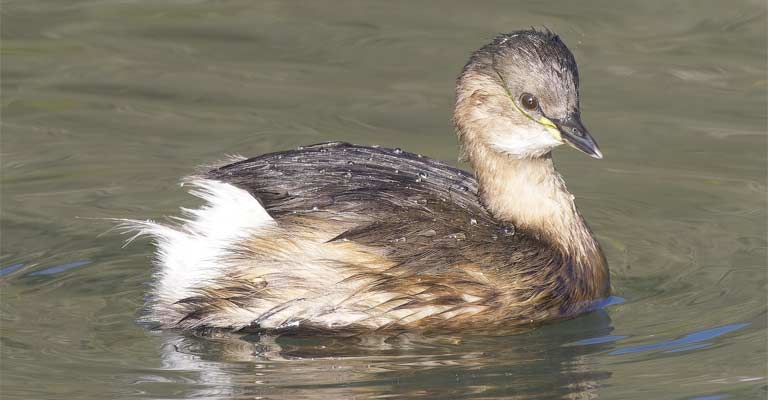
Also known as the Dabchick, the Little Grebe is a small waterbird with a distinctive, horizontally flattened body. Widely distributed, it exhibits agile swimming and diving behaviors.
Least Grebe
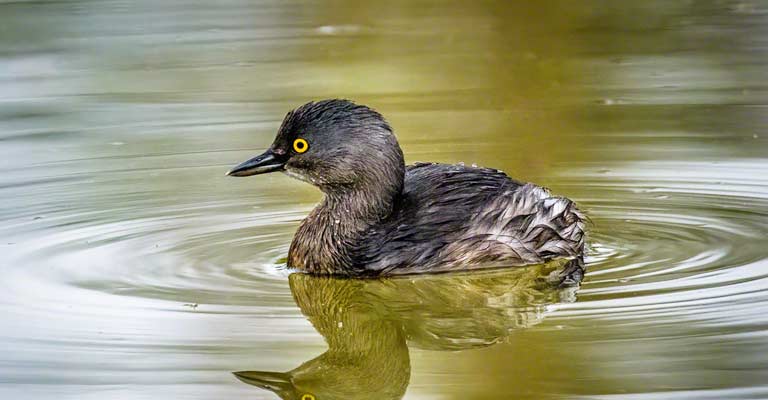
The Least Grebe is the smallest member of the Grebe family, with a dark crown and a compact size. Found in the Americas, it prefers freshwater habitats with dense vegetation.
These grebe species share common traits, such as their affinity for aquatic environments, specialized diving and swimming capabilities, and distinctive plumage patterns.
Their adaptations showcase the diversity within the Grebe family, making them a captivating group of waterfowl for bird enthusiasts and researchers alike.
Grebes Life History
Grebes, belonging to the family Podicipedidae, are fascinating waterbirds known for their unique adaptations to aquatic life.
Their life history encompasses various aspects, including their diet, habitat preferences, range, nesting behavior, breeding strategies, susceptibility to diseases, conservation status, and potential treatments.
Exploring these facets provides insight into the remarkable lives of these birds.
Food
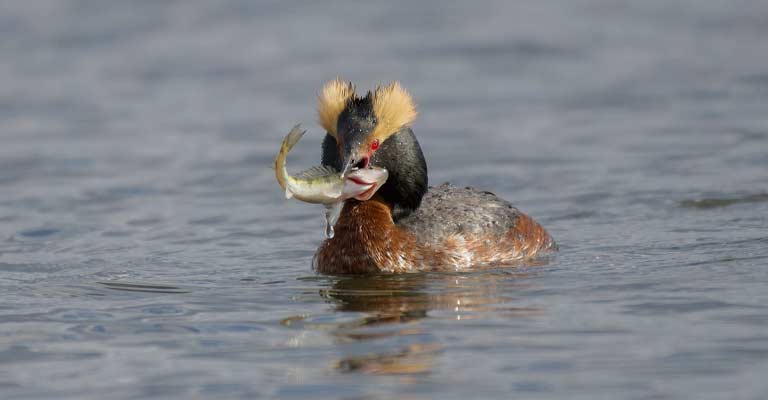
Grebes are primarily piscivorous, with fish comprising a significant portion of their diet. They also consume aquatic insects, crustaceans, and small amphibians.
Their specialized bills are designed for grasping and capturing prey underwater, showcasing their adept hunting skills.
Habitat
Grebes are well-suited to a variety of freshwater habitats, including lakes, ponds, marshes, and coastal waters. Their preference for calm, still waters with abundant aquatic vegetation aligns with their nesting and foraging behaviors.
Range Map
The distribution of grebes varies among species, with some found in specific regions while others have more widespread ranges.
Consulting a range map specific to each species provides valuable information about their geographic distribution.
Nesting
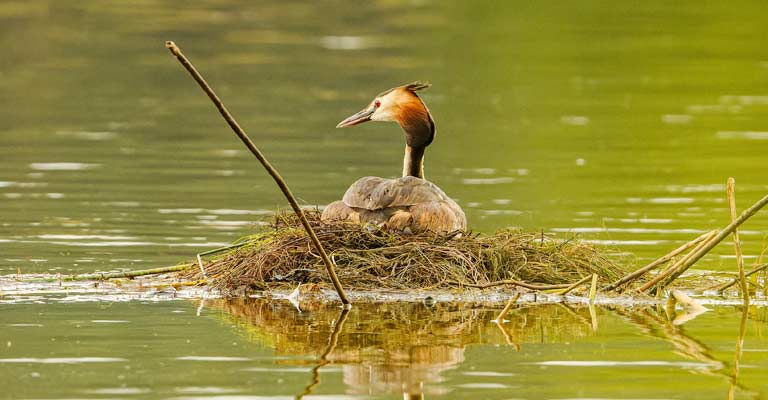
Grebes construct floating nests, often anchored to emergent vegetation. The nests are intricately woven structures, providing a secure environment for their eggs and chicks. Nesting sites are carefully chosen to minimize predation risks.
Here is a table detailing the nesting characteristics of Grebes:
| Nesting Details | Facts |
| Clutch Size | Varies by species; typically 2-7 eggs |
| Number of Broods | Usually one per breeding season |
| Egg Length | Range from 1.5 to 3 inches (3.8 to 7.6 cm) |
| Egg Width | Range from 1.2 to 2 inches (3 to 5 cm) |
| Incubation Period | Around 20 to 30 days, depending on the species |
| Nestling Period | Approximately 1 to 3 months, species-dependent |
| Egg Description | Smooth, elliptical shape; color varies among species, often pale with markings |
| Nest Location | Floating nest anchored to emergent vegetation |
| Nest Building | Elaborate construction using aquatic plants |
| Incubation Responsibility | Shared by both male and female grebes |
| Parental Care | Both parents are actively involved in caring for and feeding the chicks |
| Chick Development | Chicks are precocial, capable of swimming and diving shortly after hatching |
| Nesting Success | Vulnerable to predation, but nesting success improves with well-hidden and secure nests |
Breeding
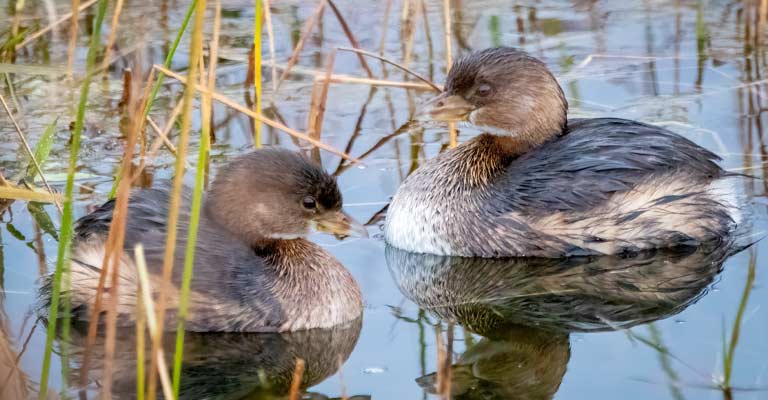
Breeding behaviors in grebes involve elaborate courtship displays, which may include synchronized swimming, head bobbing, and mutual preening.
After successful courtship, females lay a clutch of eggs, and both parents contribute to incubation and raising the chicks.
Diseases
Grebes, like many bird species, can be susceptible to various diseases. Avian botulism and parasites are common concerns. Monitoring for signs of illness, such as lethargy and abnormal behavior, is crucial for early detection.
Treatment
The treatment of diseases in grebes involves veterinary intervention and, in some cases, rehabilitation efforts.
Conservation organizations and wildlife rehabilitators play a crucial role in providing medical care and addressing the underlying causes of illness.
Conservation
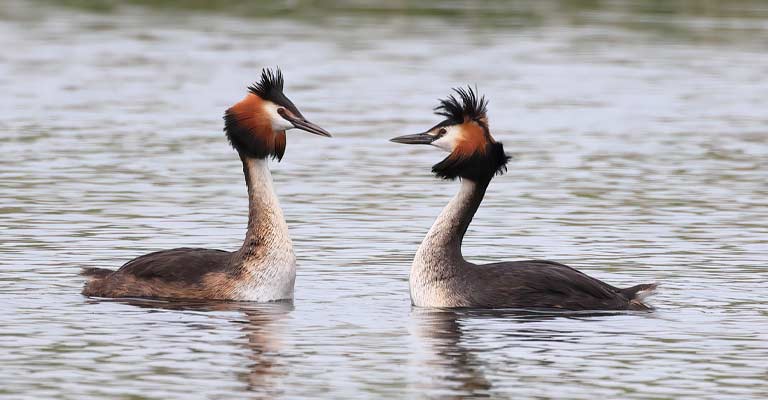
Several grebe species face conservation challenges due to habitat loss, pollution, and human disturbance.
Conservation efforts often focus on preserving critical habitats, implementing sustainable practices, and raising awareness to mitigate threats to these birds.
The life history of grebes reflects their remarkable adaptations to aquatic environments.
From their feeding habits to nesting behaviors and conservation challenges, understanding the intricacies of their lives is essential for ensuring the continued well-being of these captivating waterbirds.
10 Fun Facts About Grebes
Grebes, the enchanting waterbirds belonging to the family Podicipedidae, are not only remarkable for their distinctive appearances but also for an array of fascinating behaviors and adaptations.
Here are 10 fun facts about these aquatic wonders that highlight their unique features and intriguing lifestyles.
- Masterful Divers: Grebes are renowned for their exceptional diving abilities. With lobed toes and streamlined bodies, they navigate underwater with remarkable agility, propelling themselves beneath the surface in search of prey.
- Floating Nurseries: Grebes are innovative nest builders. Their nests are floating structures, often anchored to emergent vegetation. This adaptation helps protect their eggs and chicks from ground-based predators.
- Feathered Earrings: During the breeding season, some grebe species, like the Horned Grebe, develop distinctive golden tufts of feathers on their heads, often referred to as “ear tufts.” These ornamental features add a touch of flair to their appearance.
- Intricate Courtship Displays: Grebes engage in elaborate courtship displays involving synchronized swimming, head bobbing, and mutual preening. These performances serve not only to strengthen pair bonds but also to establish territories.
- Parental Role Reversal: In many grebe species, both parents actively participate in incubating the eggs and caring for the chicks. This shared responsibility highlights their cooperative parenting strategies.
- Precocial Offspring: Grebe chicks are precocial, meaning they are born with open eyes, covered in down feathers, and capable of swimming and diving shortly after hatching.
- Cryptic Plumage: Outside the breeding season, some grebes exhibit cryptic plumage, blending with their surroundings to avoid detection by predators. This adaptive coloration aids in their survival.
- Unique Leg Placement: Grebes have an unusual leg placement located at the back of their bodies, making them exceptional swimmers but awkward walkers on land. This distinct feature sets them apart from other waterfowl.
- Pied-billed Adaptation: The Pied-billed Grebe is named for its unique bill, marked by a distinctive black stripe. This adaptive feature enables them to crush and consume a variety of prey, including small crustaceans and insects.
- Vocal Variations: Grebes are not known for their melodious songs, but they communicate with a variety of calls. From soft coos to more intense vocalizations during courtship displays, these sounds play a crucial role in their social interactions.
Grebes captivate with their diverse and quirky features, showcasing the marvels of avian adaptation in aquatic habitats.
Whether it’s their diving prowess, unique nesting strategies, or ornamental head tufts, these waterbirds never cease to amaze both bird enthusiasts and casual observers alike.
Wrapping Up
In the realm of avian wonders, grebes stand out with their captivating behaviors and unique adaptations.
From their masterful diving skills to innovative nesting habits and shared parental responsibilities, these waterbirds exemplify nature’s ingenuity.
Whether adorned with ear tufts, exhibiting cryptic plumage, or engaging in elaborate courtship displays, grebes paint a vibrant picture of diversity and survival in aquatic ecosystems.
Their precocial offspring and vocal variations add to the intrigue, making grebes a subject of fascination for bird enthusiasts seeking to unravel the mysteries of these enchanting creatures.